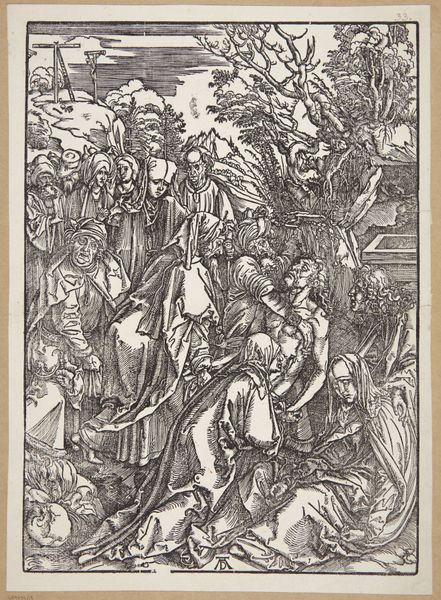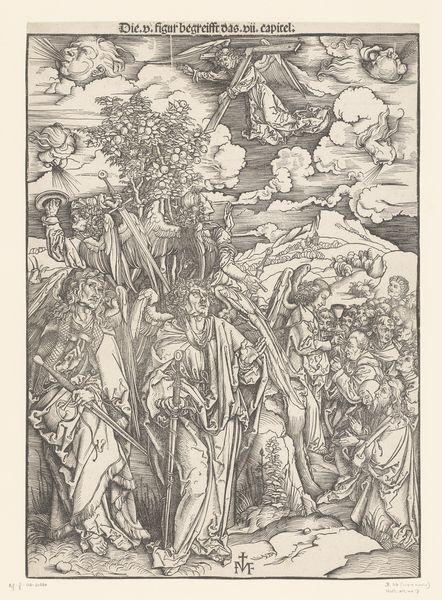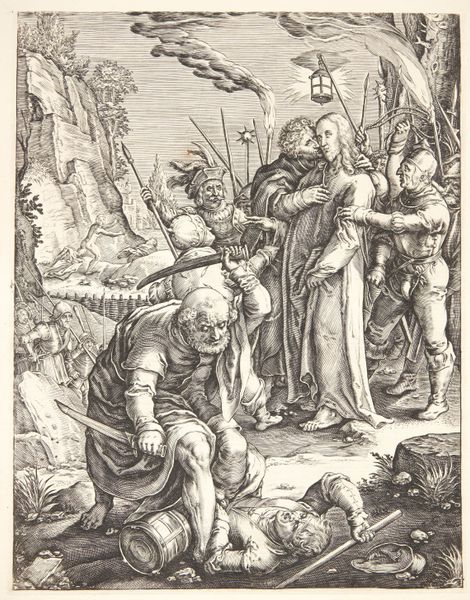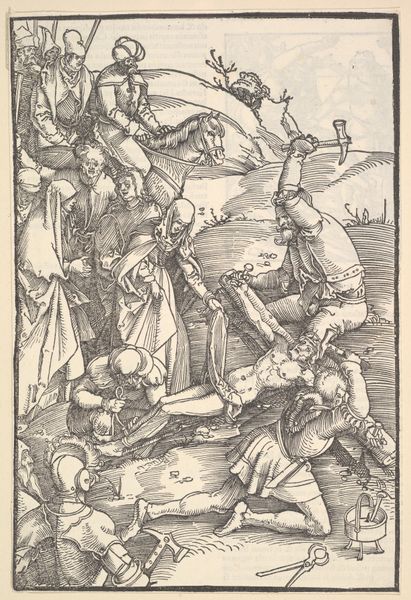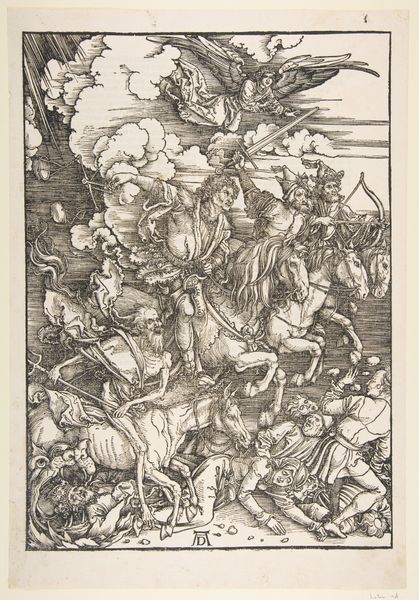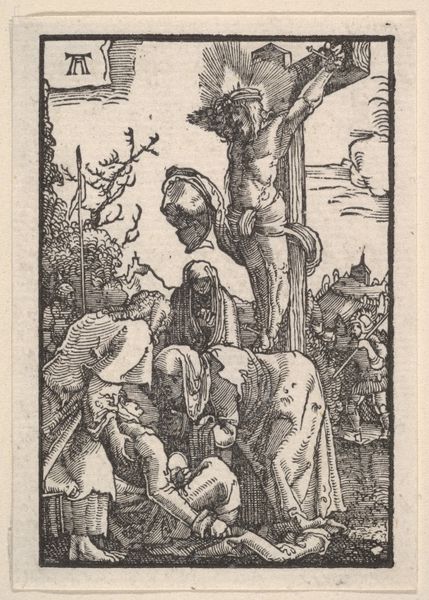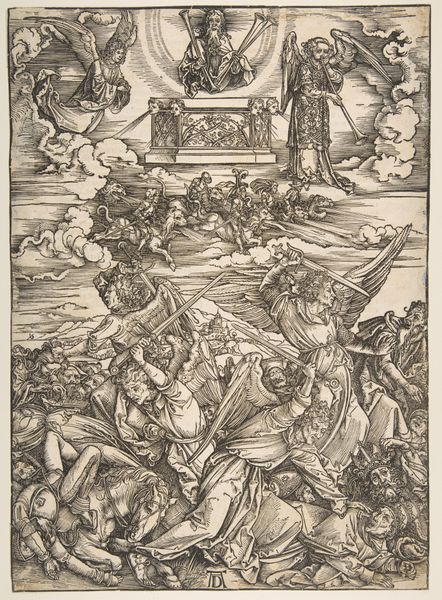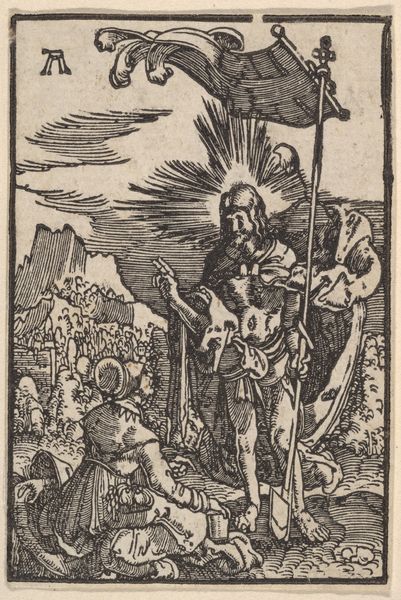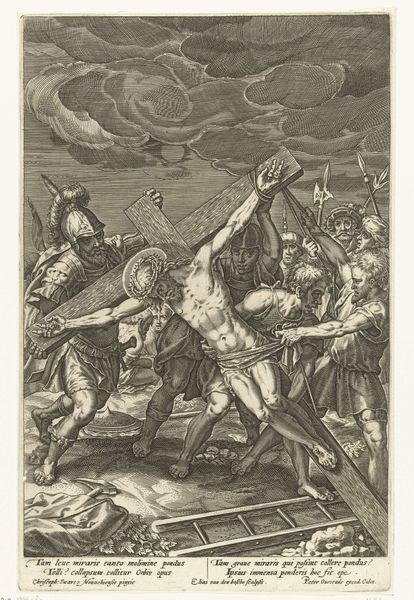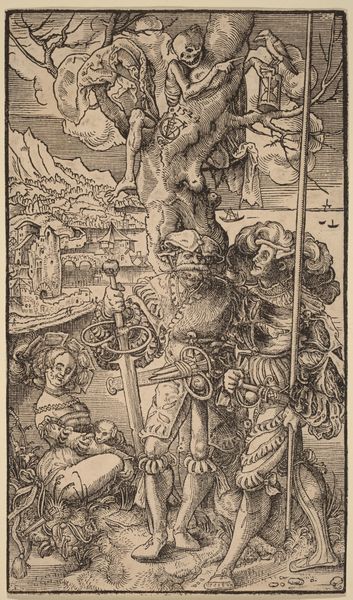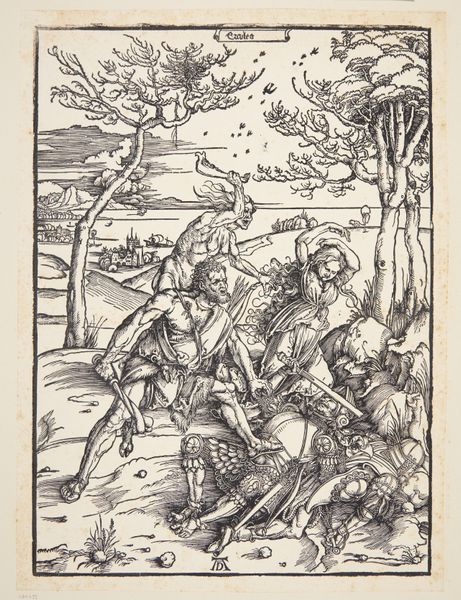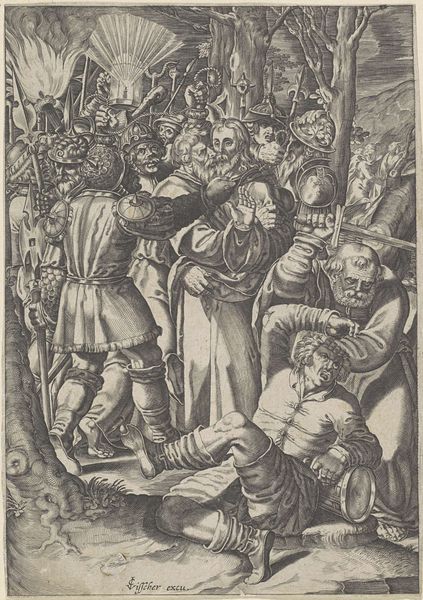
The Martyrdom of Saint Catherine of Alexandria 1485 - 1528
0:00
0:00
drawing, print, woodcut, engraving
#
drawing
#
narrative-art
# print
#
landscape
#
figuration
#
woodcut
#
line
#
history-painting
#
northern-renaissance
#
engraving
Dimensions: image: 15 7/16 x 11 5/16 in. (39.2 x 28.7 cm) sheet: 15 3/4 x 11 5/8 in. (40 x 29.6 cm)
Copyright: Public Domain
Editor: Right, let's talk about Albrecht Durer’s woodcut, "The Martyrdom of Saint Catherine of Alexandria," believed to have been created between 1485 and 1528. It's quite striking, this incredibly detailed scene rendered in such stark black and white. I find it both beautiful and brutal. What’s your take on this dramatic depiction? Curator: Beautiful and brutal indeed – that tension, that dance between light and shadow, the exquisite detail amid such violence... Dürer’s got a flair for the dramatic, hasn’t he? It hits me like a stage play, all the characters posed just so, in the middle of their acts. Notice the saint’s calm posture juxtaposed with the chaos around her. What does it tell you about her character? Editor: I guess it shows her faith, unflinching even as everything goes sideways. It's interesting that the torturers aren't faceless brutes either; some look genuinely stricken, covering their faces as the wheel breaks apart. Is that typical of the Northern Renaissance, that level of humanization, even for villains? Curator: Exactly! This isn’t just a flat representation of good versus evil. Dürer, steeped in the Northern Renaissance humanism, is inviting us to ponder the inner turmoil. Their shock mirrors the miracle happening – the divine intervention shattering the torture wheel, isn’t it fascinating? That explosive energy contrasts beautifully with Catherine’s almost serene presence. Plus, that dramatic sky almost threatens to steal the show. Does the landscape feel symbolic to you? Editor: It does a bit, now that you mention it. The city feels distant, almost irrelevant compared to the intense foreground drama. Perhaps signifying the earthly world fading away for Catherine? Curator: A compelling point. Ultimately, what resonates for me is the way Durer handles the print form to capture a moment that blends human drama and divine spectacle, making the impossible appear believable. Editor: Absolutely. It’s not just a historical scene; it's a really immersive, emotional experience.
Comments
No comments
Be the first to comment and join the conversation on the ultimate creative platform.
